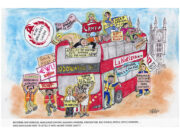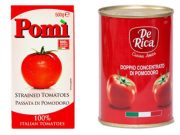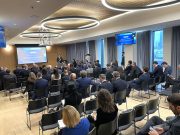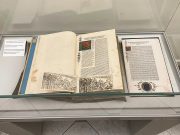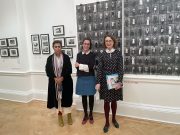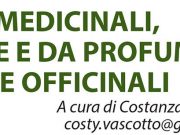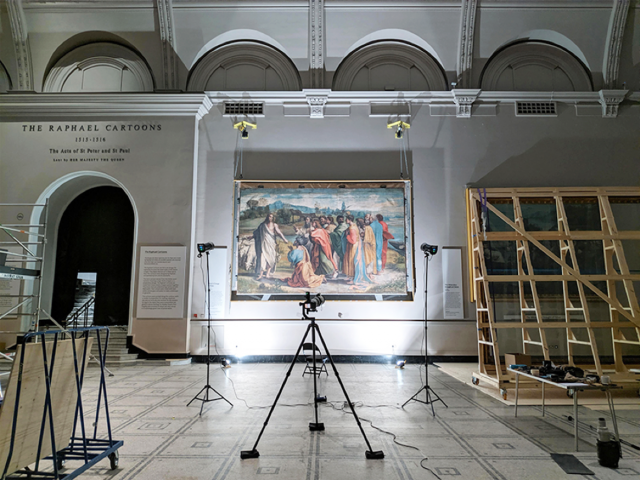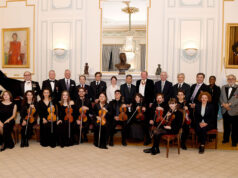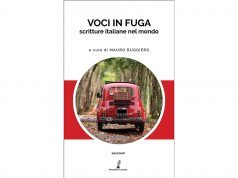On 14 November 2020 the Raphael Court – home to the Raphael Cartoons inside the Victoria&Albert Museum of London – will reopen following a nine-month refurbishment to mark the 500th anniversary of Raphael’s death. The refreshed gallery and its new interpretive approach will transform the way museum visitors experience the Cartoons, lent to the V&A from the Royal Collection by Her Majesty The Queen.
The Raphael Cartoons are among the greatest treasures of the Renaissance in the UK. Shortly after his election in 1513, Pope Leo X commissioned Raphael to create a set of ten full-scale designs for a series of tapestries for the Sistine Chapel in the Vatican Palace, illustrating scenes from the lives of Saint Peter and Saint Paul. Once complete, the Cartoons – each measuring around 5 metres wide and 3.5 metres high – were sent to the workshop of merchant-weaver Pieter van Aelst in Brussels, which transformed the monumental designs into tapestries. Seven of the Cartoons survive to this day, brought to Britain in the early 17th century by the Prince of Wales, later Charles I. They remained in the Royal Collection and were lent to the South Kensington Museum – now the V&A – by Queen Victoria in 1865 in memory of Prince Albert, and have been on public display in the museum ever since.
Working with architects Feilden Clegg Bradley Studios and lighting designers Studio ZNA, the museum in Kensington is introducing a new decorative scheme and infrastructure in the Raphael Court to reveal the Cartoons’ extraordinary details and vibrant palette. Acoustic panelling will help to create a calmer environment, and bespoke furniture gives new opportunities to sit and enjoy the works at leisure. State-of-the-art LED lighting will reduce reflections on the glass and produce a marked increase in visibility of the works. Following an extensive high-resolution recording project carried out by Factum Foundation, graphics by Polimekanos and digital gallery interpretation by Spiral Productions will also reveal in-depth stories about the creation and history of the Cartoons, available to visitors in the gallery and online.
The refurbished gallery’s new interpretive approach will provide the public with a deeper level of access to the Raphael Cartoons, enhancing our understanding of these monumental works of art. In August 2019, the V&A and Royal Collection Trust worked with Factum Foundation and Momart to carry out a high-resolution recording project, supported by the Royal Commission for the Exhibition of 1851. This involved unframing each Cartoon to capture high-resolution three-dimensional data of the surface, and panoramic composite photography to record the colour and gather infra-red data. It also provided an opportunity to carry out conservation checks, glass cleaning and frame cleaning.
Each 3D image took over 95 hours to capture with four of Factum’s Lucida 3D Scanners mounted on scaffold towers. The resulting images reveal the Cartoons’ unique surface texture, showing the composite sheets of paper that make up each Cartoon; evidence of the process of duplicating the Cartoons by ‘pouncing’ the paper – a series of minute holes used by the tapestry weavers to transfer the designs; and the marks of previous restorations.
The images captured will be crucial for the study and future care of the Cartoons, as well as in enhancing the gallery interpretation in an unprecedented way. Imagery and a suite of new interactive interpretation will be available online, accessed in the gallery via QR codes, allowing visitors to engage with the interpretation on site using their own devices.
“The set of seven surviving tapestry Cartoons by Raphael – Ana Debenedetti, Lead Curator of the Raphael Project and Curator of Paintings at the V&A, said: comprise a unique Renaissance treasure, both in terms of aesthetic value and technical achievement. Cutting-edge technology, provided by Factum Foundation, offered non-invasive methods of studying such canonical works of art by allowing us to look beneath the visible layers of paint and discover Raphael’s creative process. It is a feast for the eye to be able to enjoy the extraordinary beauty of these monumental drawings which are over 500 years old. We look forward to sharing this enhanced experience with our visitors when the gallery reopens in November to mark Raphael’s 500th anniversary.
One of the V&A’s largest and most dramatic galleries, The Raphael Court is almost identical in proportions to the Sistine Chapel and was last refurbished from 1992 to 1996. Combined with enhanced interpretation, the new scheme – with its darker colour palette, state-of-the-art lighting, refreshed furniture, new graphics and on-site digital experience – will heighten our visitors’ viewing experience and their enjoyment of these works of art.




